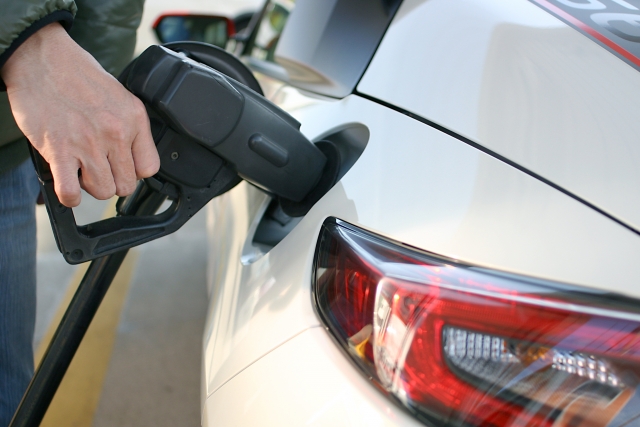You might think of gasoline as the energy source to power a car, but many engines use diesel. Recently, electric vehicles have become a promising candidate for next-generation vehicles as vehicles that do not emit exhaust gas such as zero emission.
Also, we cannot forget fuel cells using hydrogen. What are the different energy sources, and what are the advantages and disadvantages?
Oil produces three types of fuel
Gasoline and light oil are secondary energy generated by refining petroleum (crude oil). LPG (liquefied petroleum gas) is also a fuel derived from oil and is used in some vehicles such as taxis.
Basically speaking, refining petroleum produces a certain percentage of gasoline, light oil, LPG, and heavy oil. Consumption of petroleum-derived secondary energy in a well-balanced manner leads to eliminating waste.
By the way, gasoline and light oil are hydrocarbons in the mainstream, so their characteristics are similar. The greater the carbon content, the greater the thermal energy per volume. 1.0 L of gasoline has a heating value of 7,973 kcal and light oil has a 9,088 kcal.
The good fuel economy of diesel engines that use light oil is also due to the different calories of these fuels themselves. Conversely, diesel engines are more common for the same fuel economy in terms of CO2 (carbon dioxide) emissions, which are emphasized in recent environmental measures.
Diesel engines are also subject to NOx (nitrogen oxide) emissions due to their structure. In addition, PM (particulate matter) is more common with light oil than gasoline. As a result, diesel engines tend to be more costly to treat exhaust gases, and vehicle costs tend to be more expensive than gasoline-powered vehicles.
In Japan, light oil is cheaper due to taxation, but the cost itself does not change significantly because it is produced from the same oil in the first place (actually gasoline is slightly more expensive). As a result, light oil may be more expensive in some parts of the world.
Electricity is born from various energies
Recently, electricity is rapidly increasing its presence as an energy source for commercial vehicles. Electricity is secondary energy that can be generated by converting various primary energies such as oil, coal, solar power, wind power and nuclear power.
Another advantage is that usability does not change regardless of the primary energy source. It is an advantage in terms of environmental measures that CO2 emissions can be counted as zero if electricity is generated from renewable energy.
However, the challenge when using it as a vehicle energy source is the time and effort required to charge it. Even quick charging requires time in units of 10 minutes, and quick charging itself damages the battery.
On the other hand, regular charging is an overnight course, and in reality, charging facilities must be prepared individually in parking lots and the like. It is a disadvantage that the hurdle in operation becomes high.
Furthermore, the unit price of the battery is still high, and the more the battery is loaded, the higher the vehicle price. The dilemma of electric vehicles is that reducing the battery load to reduce vehicle prices will reduce the cruising range. The latest trend is that batteries for electric vehicles should be kept to a minimum to reduce CO2 emissions during production.
Hydrogen can increase energy consumption
Hydrogen is expected to be a zero-emission (emission-free) vehicle energy source along with electricity. In the past, there was an approach using an engine that uses hydrogen, but nowadays, the majority of cases assume vehicles equipped with a hydrogen fuel cell that generates electricity by reacting hydrogen with the atmosphere (oxygen).
Hydrogen is sometimes produced as a by-product of industrial products, but the term “hydrogen society” often presupposes the production of hydrogen by water splitting with electricity. In other words, hydrogen can be said to be tertiary energy.
The reason why electricity is used to generate hydrogen is because storing electricity is difficult in terms of cost. In the case of power generation using renewable energy such as sunlight or wind power, it is difficult to control the amount of power generation according to demand. Therefore, we need to consider a way to store electricity once.
One way is to use a battery, but that alone wasn’t enough, so we came up with a way to convert electricity into hydrogen and store it. The so-called hydrogen society model uses this as a stable supply of energy over a certain area.
Hydrogen is a tool that becomes effective when the proportion of renewable energy generation becomes higher, and it is the future of the world where thermal power and nuclear power are mainstream. Therefore, electric vehicles are considered to be the mainstream as a practical solution of zero emission. It will be some time before fuel cell vehicles take the lead.
However, filling with hydrogen is much faster than charging electricity, and in terms of usability, it is close to the current car using fossil fuels. This is emphasized as a merit, but it is a challenge to use a lot of energy to fill hydrogen.
Although fuel cell vehicles, which are considered by automakers, use compressed hydrogen, the pressure is over 70MPa (about 700 atmospheres), and the energy consumed when filling and manufacturing hydrogen tanks is not small.
To maintain a civilized society while reducing the CO2 emissions stipulated in the Paris Agreement, increasing the amount of renewable energy generation is the way to go. Considering the roadmap, we can imagine a future in which electric vehicles will become mainstream for a while, and then fuel cell vehicles will come into close-up when entering the hydrogen society.
If technologies such as artificial photosynthesis, which decomposes CO2 and separates it into carbon and oxygen, would be established at a cost-effective level and if the CO2 concentration in the atmosphere could be freely controlled, it would be necessary to stick to zero emissions. It will disappear, but what will the future look like?



